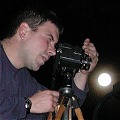

|
e-mail : v.g.boehm@railhoo.de |
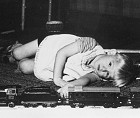
|
Eduard Erdmann caused his parents many hours of desperation when, as a four-year-old, he regularly took off to investigate the great world of the railway. It was only later when he discovered that certain locomotives and operational stages were not illustrated in books that he happened to become involved in taking photos of trains. So in 1966 he began taking photos himself with a small-format camera. Up until the mid-70s he produced mainly black-and-white negatives which he developed in his own laboratory, and after that mainly small-format slides. e-mail : eduard.erdmann@railhoo.de |
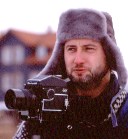
|
Since 1979 he has been producing his own pictures of his travels. First in small format (Pentax, Minolta, Leica), then from 1989 in medium format (Mamiya 645). Up until 1989, film for small-format slides was almost exclusively Kodachrome, then he changed to Fujichrome Velvia which he also uses as a standard slide film in medium format. For black-and white photos he used mainly Ilford. e-mail : roland.erdmann@railhoo.de |
|
Born in 1974, he is the epitome of a model railway enthusiast. He builds functioning models with minute detail true to the original. His current supermodel is the fully-functioning model snow-cutter from the Günther series which can shovel a mixture which includes flour and icing-sugar and has digitally-controlled sound, light and smoke effects. Photos of the original are taken as a basis for his models. e-mail : armin.fuchs@railhoo.de |
|
e-mail : gussmann@debitel.net |
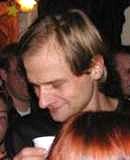
|
e-mail : heinrichhubbert@web.de |
|
e-mail : gerd.kempkes@railhoo.de |
|
e-mail : chaostours@railhoo.de |
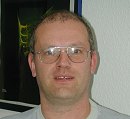
|
Joachim Leitsch was born in Essen and grew up in the German industrial "Ruhr" region. He had his first contact with steam engines before he started school: BR 65 and 78 to the later S6 and, more importantly, the mining railway Victor-Ickern in Castrop-Rauxel, which was still steam-driven. This paved the way for his later interests.... The railway virus broke out in 1975: first the state railway, then regional trams and an active interest in working steam railways (founder member of the Verein zur Erhaltung der Hespertalbahn e.V.). For the last ten years his main interests have been industrial and mining railways in the Ruhr area, concentrating mainly on the historical restoration of vehicle stocks. He is co-author of two books on steam and diesel trains in the steel industry in Northrhine-Westphalia. His photos of industrial trains are mainly used for documentary purposes and are normally taken with the indestructible Practica small-format cameras on Agfa CT100 slides, on rare occasions also with a Practisix 6*6 and black-and-white Ilford films. e-mail : JLeitsch@gmx.de |
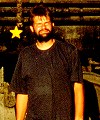
|
Christoph Oboth, born in 1967, is interested in railways since ever he can walk, surely influenced by his father. Since his first trip to Turkey in 1988, he expanded his photographic activities upon international railway systems worldwide (NOT only in search of steam!). Since 1993, he is one of the editors of Dampf & Reise / Fernexpress-magazine. Beside railways, one of his photographic main-topics is industrial architecture. Used Camera systems: After some rather disappointing experiences with standard-format cameras, in 1990 he shifted to 6x6 Format (Hasselblad and Rollei cameras). He prefers Fuji-RVP Slide Films. e-mail : christoph.oboth@rz.ruhr-uni-bochum.de |
|
Infected by his father with the railway virus in early childhood, his first photographs were taken in 1985 with an AGFA Optima, later with a Nikon F-301. At the beginning of 1996 he changed to medium format and has since been using Mamiya M645. His most commonly used films are Fujichrome Velvia and Agfa-Scala. He still mainly takes photos of steam trains, although he was too young to experience the age of the steam engine in Germany himself. His other areas of interest are German private railways. He is an active member of the Arbeitsgemeinschaft Muttenhalbahn e. V. as well as writing on a freelance basis for the model railway section in the Eisenbahn Kurier. e-mail : Andreas.Reinhard@gmx.net |
|
Peter Reinhard, born in 1937, has always had a passion for railways. Today he is particularly interested in trams, especially the former Iserlohner Kreisbahn. He is also committed to the preservation of railways and is a founder member of the "Verein zur Erhaltung der Hespertalbahn" (Committee for the Preservation of the Hespertal Railway) and currently a board member of the DGEG (Deutsche Gesellschaft für Eisenbahn-geschichte). e-mail : reinhard.hemer@gmx.de |
|
As with many railway enthusiasts, Joachim Reinhard had the choice of either sharing his father's hobby or not being infected at all. He chose the former, so inevitably there came a point where he began his own railway activities. In the beginning he took photographs of the trains going past the back of his parents' garden, visited working steam railways and went on special tours, until eventually model railways gained the upper hand. He had a great talent for constructing model railways, always striving for perfection, and in 1994 had his first article printed in the Eisenbahn Kurier, to which he has been contributing regularly since 1995 on the subject of model railways. He has never lost sight of the real thing, however, but modern rail travel does not have the same flair as the good old-fashioned steam age and therefore only rarely manages to tempt him away from his models, for example in the case of special tours with all the traditional details, like the "Red Star". e-mail : joachim.reinhard@gmx.de |
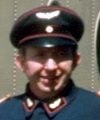
|
Weking Risse, born in 1944, has been an avid railway photographer since 1965. He pays particular attention to the little things on either side of the tracks and has captured many details (not only trains) in his photos. All of his photos originated in small format. His career took him to the Deutsche Bundesbahn in 1970. Until 31.09.1997 he was an active train enthusiast. Today he is actively involved with some working steam railways and organisations for rail enthusiasts, among others the Hespertalbahn (founder member), DGEG (Deutsche Gesellschaft für Eisenbahngeschichte e.V., Karlsruhe) and the BSW (Stiftung Bahnsozialwerk). He is a member of several groups: Historische Schienenfahrzeuge Haltingen (ET 25), ET 491 Gläsener Zug München and Die Eisenbahnfreunde Witten. e-mail : weking.risse@railhoo.de |
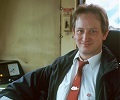
|
e-mail : juergen.sauer@railhoo.de |

|
He has been a train photographer ever since he became addicted to railways. That was at the start of 1990 when there were just a few steam engines still running on regular lines in Poland. Main area of interest: Since scheduled steam engine traffic was phased out in Europe he has turned his attentions to private railways, in particular to the Dortmunder Eisenbahn (DE). Photographic themes: He started out taking photos with a Minolta XD7 but reached the stage where the small-format film was not good enough, so he moved on to medium format (6x6). He is now quite happy with the services of his Mamiya C330. He still uses the same films: both in small and medium format over 90% of his pictures have been produced with Fujichrome Velvia. e-mail : joerg.scheerer@railhoo.de homepage : http://www.eisenbahnseiten.purespace.de/ |
|
Born in 1960. As a five-year-old he was more interested in construction work on his model railway than in actually playing with the model trains. Later he trained as a toolmaker and studied industrial design. During his studies he took his first steps as a journalist on the subject of model railways, writing articles about railway depots and how to bring a look of authentic wear and tear to model trains. Today he is an expert in this field due to his extensive knowledge of the original structures and processes. He has numerous articles, magazines on specific railway themes and photo stories to his credit. With his model railways he strives to recreate the atmosphere and detail of the originals as closely as possible. e-mail : trinom@cityweb.de |